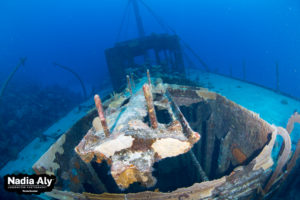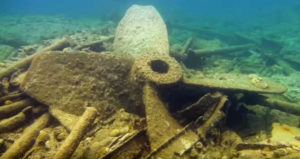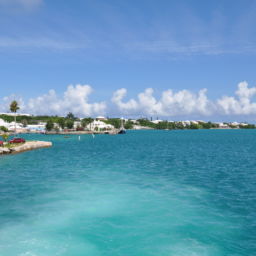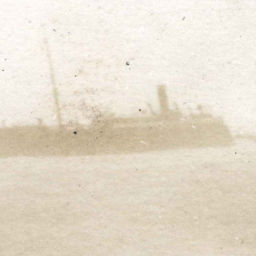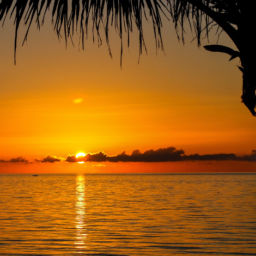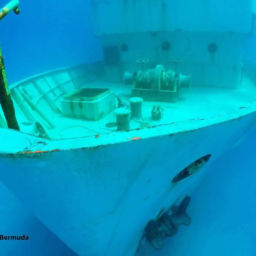The image of Bermuda calls to mind pink sands, pastel houses, Bermuda shorts, golf courses and azure waters. But the island’s enchantments don’t end on land: Bermuda is home to some of the world’s premier wreck diving. Bermuda’s beautiful but treacherous reefs have spelled doom for more than 300 wrecks, dating from the 1600s up to the late 1980s. But divers don’t exist on wrecks alone; those same reefs offer nearly endless swim-throughs, caves and canyons. Here are our picks for the best diving in Bermuda.
The L’Herminie
A French 60-gun warship, L’Herminie sank while its crew was incapacitated by yellow fever. After it became grounded on the reef in early 1838, locals ferried out to the ship and rescued the entire crew. Today the wreck rests in around 45 feet (14 m) of water. Most of the guns remain on the bottom, along with bricks from the kitchen stoves. Divers can see bottle fragments, anchors and copper sheeting.
 The Hermes
The Hermes
Arguably Bermuda’s most popular wreck is the intact World War II U.S. Navy Hermes. Purpose sunk in 70 feet of water (21 m) near Horseshoe Bay, the 165-foot (50 m) ship sits nearly upright on a sandy bottom. The engine room, crew quarters and main hold are all intact. Bring a dive light to peep into corners and crevices.
Tarpon Hole
This is one of the author’s favorite reef dives. It’s also one of the island’s newest dives, with the buoy placed in 2013 at 55 feet (17 m). Located just off Elbow Beach on the south shore, the dive can go as shallow as 10 feet (3 m). Huge arches and long tunnels abound, and divers will often see horse-eye jacks and grouper in the overhangs and arches.
The Cathedral
This reef site is off the historic Castle Islands at the east end of the Island. A shallow entry leads you through the middle of the breakers and the “Devils Throat” into 55 feet (17 m) of water. The highlight of the dive is the huge cavern with holes in the roof, which allow beams of light to penetrate the interior, reminiscent of a church. Other swim-throughs and an abundance of marine life await as well.
 The Cristobal Colon
The Cristobal Colon
The largest Bermuda shipwreck, this Spanish cruise liner was built in 1923. The 499-foot (152 m) vessel hit the coral reefs off Bermuda’s north shore in 1936 but remained above ground and intact long enough that that other ships ran aground assuming it was in a channel. The British used the shell for bombing practice during World War II, eventually sinking the ship’s remains. The wreck litters a vast area of the reefs some nine miles off the northeastern part of the Island.
The Rita Zovetta
This 360-foot (110 m) Italian cargo ship sank in 55 feet of water in 1924. Salvaged for scrap metal in World War II, there’s now a large debris field for exploration as well as a few swim-throughs.
The Mary Celestia
The Confederate Army used this side-paddlewheel steamer as a blockade runner during the Civil War. It now sits just off the south shore in Southampton in around 55 feet (17 m) of water. It’s paddlewheels are still clearly evident and in 2011, five intact bottles of French wine were found in the bow compartment, as well as some French perfume.
 The Constellation and Montana
The Constellation and Montana
This dive on two wrecks offers a true two-for-one experience. These two wrecks lie nearly on top of each other, although they sank 100 years apart. The Constellation, a wooden-hulled American schooner was built in 1918 and used during World War II. It sank in 1943, headed for Venezuela. The Montana was a Civil War blockade runner that sank on Bermuda’s shallow reefs in 1863. The wrecks were the basis for Peter Benchley’s novel and film “The Deep.” Divers can see bottles, tiles, slate and even morphine ampoules.
Southwest Breaker
Peter Benchley used Southwest Breaker in the opening scene for “The Deep.” This lone breaker, two miles off the southwest corner of the island, offers divers the closest thing to swimming in an aquarium. There are abundant reef fish of all kinds at the site in only 30 feet of water, which translates to long bottom times and a great first dive for the rusty diver. A huge tunnel runs from one side of the breaker right through the middle of the breaker to the seaward side.
The Pollockshields
British cargo ship the Pollockshields sank in 1915 with a cargo of 350 tons of ammunition for World War I, including shells, gunpowder and depth charges. All crew survived with the exception of the captain. The wreck is a short swim off Elbow Beach in shallow (20 to 30 feet) water. This wreck lends itself to snorkelers who wish to swim out form the beach to investigate, but divers should consider visiting via boat as there can be surge to contend with.


